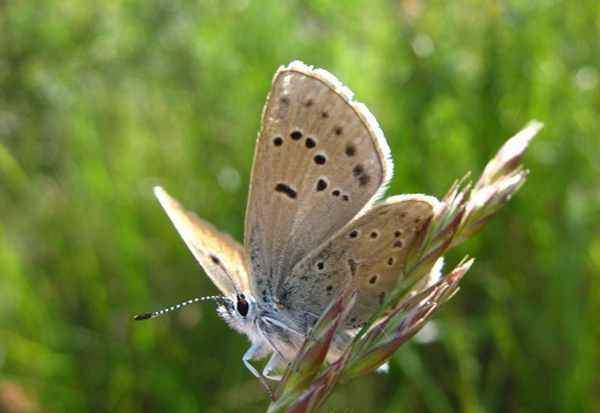Fender’s Blue Butterfly Populations Grew with Endangered Species Act Protection
June 22, 2021 - PORTLAND, Ore. — The U.S. Fish and Wildlife Service today proposed downlisting the Fender’s blue butterfly from endangered to threatened under the federal Endangered Species Act. The proposal is based on the recovery of butterfly populations in northwest Oregon’s Willamette Valley.
“We came perilously close to losing this beautiful and unique butterfly,” said Quinn Read, Oregon policy director at the Center for Biological Diversity. “The measured recovery of the Fender’s blue, especially the protection of its fragile prairie habitat in the Willamette Valley, is a testament to the effectiveness of the Endangered Species Act.”
 Fender's blue butterfly photo courtesy of the Oregon Department of Transportation
Fender's blue butterfly photo courtesy of the Oregon Department of Transportation
The Fender’s blue, a tiny butterfly with a 1-inch wingspan, is found only in the prairie and oak savannah of the Willamette Valley and wasn’t scientifically documented and named until 1931. Within a few years, the species was presumed extinct until small populations were rediscovered in 1989.
When the Service listed the Fender’s blue as endangered in 2000, less than 4,000 of the butterflies were known to live in the wild. In 2005 the agency designated 3,010 acres of critical habitat for the species in the Willamette Valley.
Fender’s blue numbers have fluctuated over the years, but a 2016 survey found populations had grown to 29,000 total individuals. Four of the butterfly’s known populations have sustained more than 200 butterflies for 10 consecutive years, an important milestone for the species’ recovery.
Fender’s blue butterflies are completely dependent upon the threatened Kincaid's lupine. Fender’s blues lay one egg at a time on the back of a Kincaid's lupine leaf, and each egg is no larger than the head of a pin. Adult butterflies live for just seven to 14 days.
The Service cited management efforts to restore and maintain prairie habitat in the Willamette Valley as benefiting the Fender’s blue. But the butterfly remains highly vulnerable to climate change, as rising temperatures harm the flowering plants it needs to survive.
The Center for Biological Diversity is a national, nonprofit conservation organization with more than 1.7 million members and online activists dedicated to the protection of endangered species and wild places.
Source: Center for Biological Diversity







